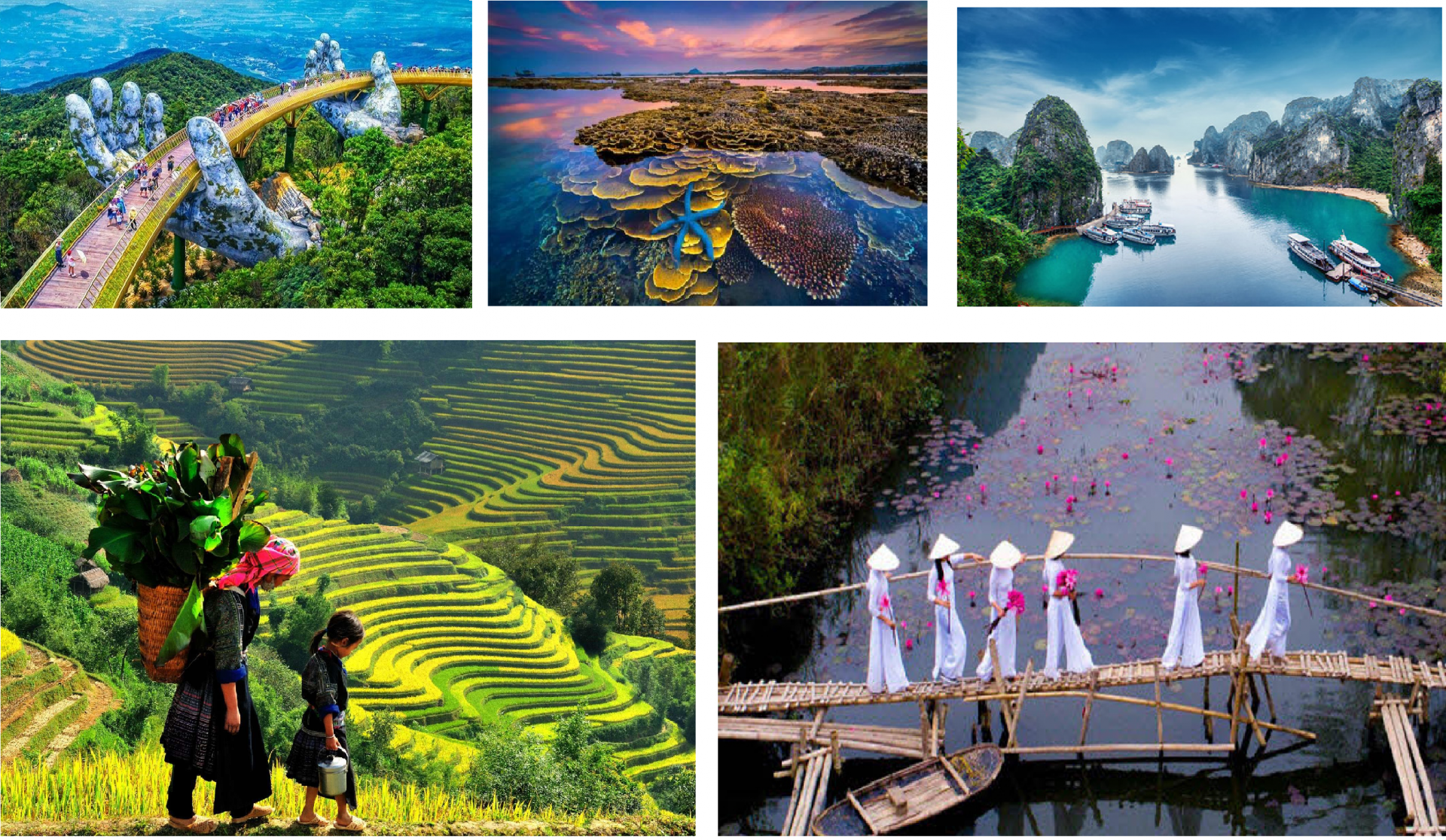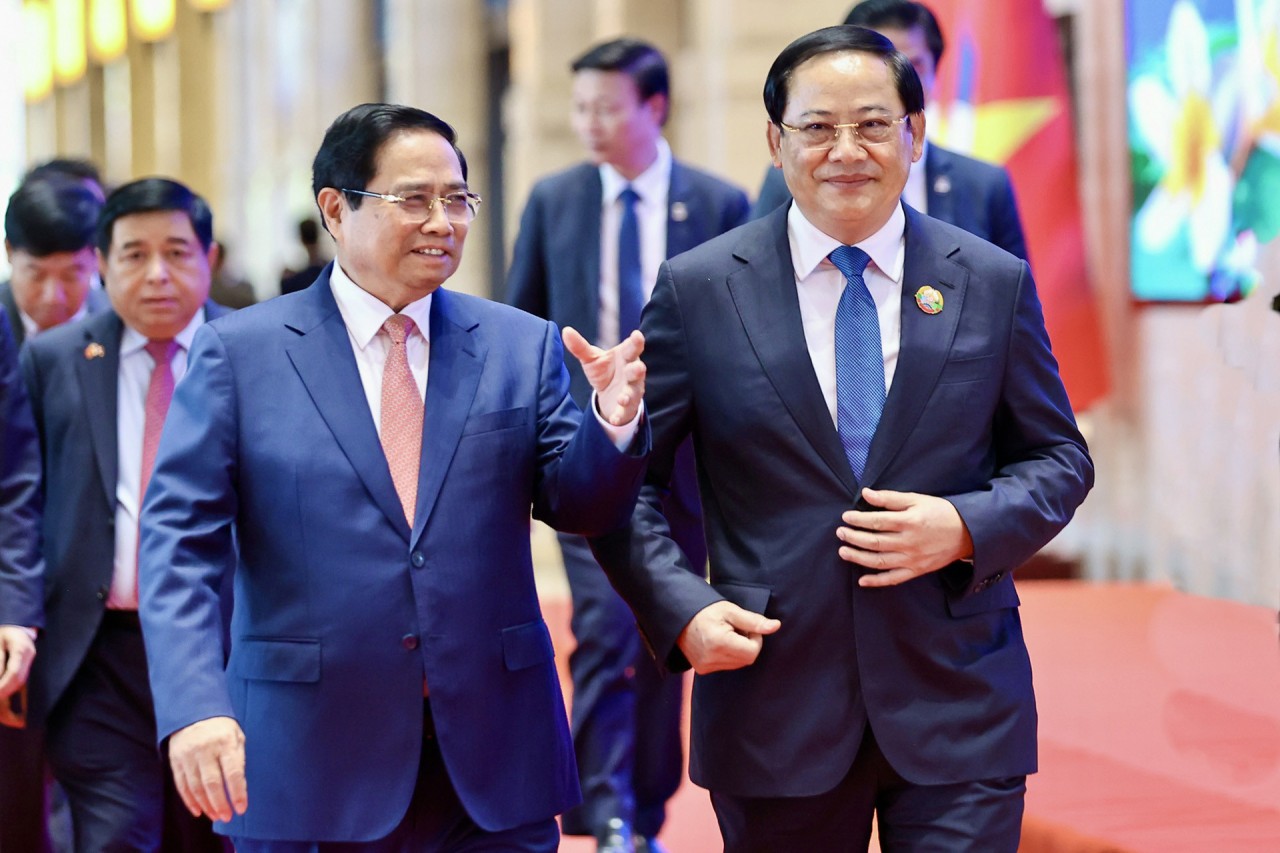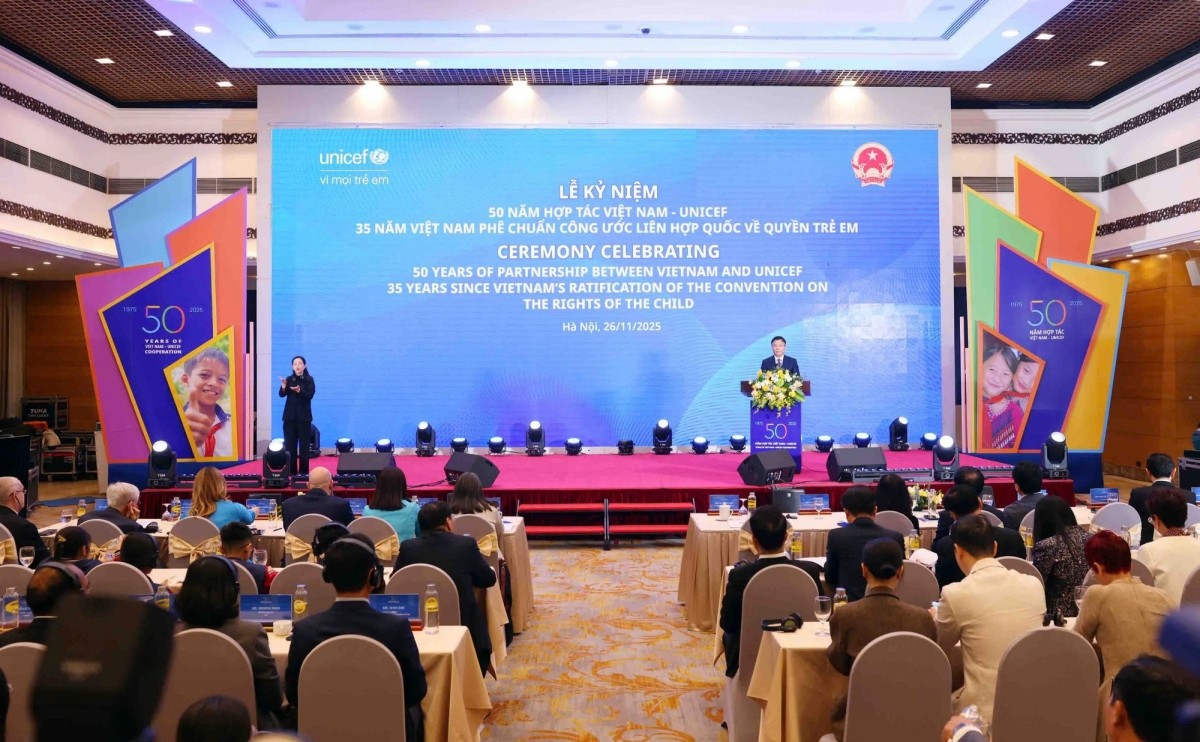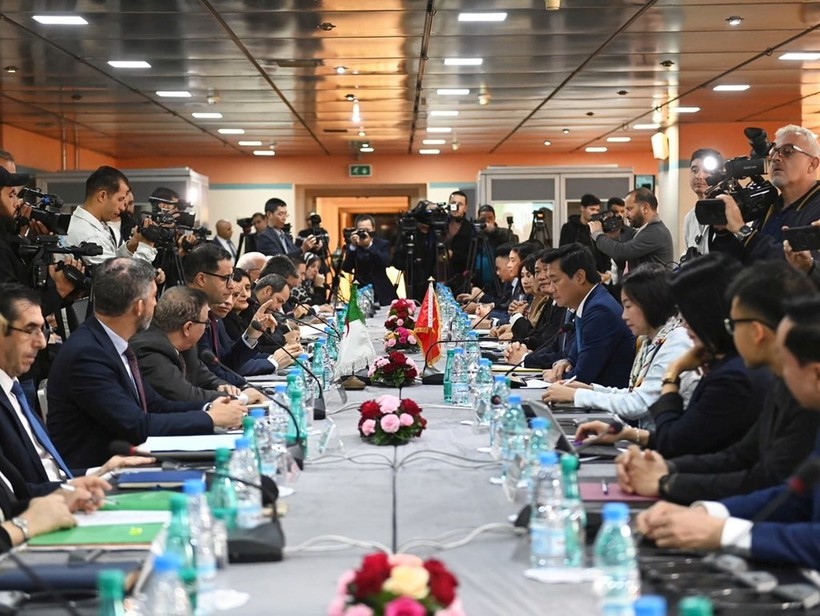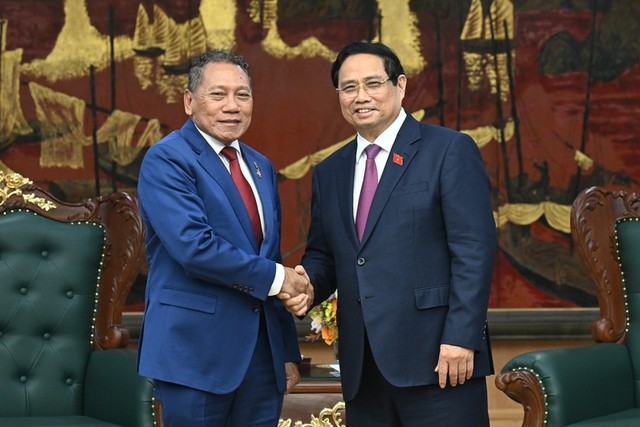Vietnam Forecast to Lead East Asia-Pacific in GDP Growth This Year
| Two Vietnamese Ports Among World’s Top 30 Most Efficient Container Ports | |
| India's services and manufacturing exports offer untapped potential for foreign investors: World Bank Chief Economist |
In its October 2025 edition of the East Asia and Pacific Economic Update, World Bank experts projected that Vietnam is likely to lead the region with a growth rate of 6.6% in 2025 - the highest among emerging economies.
Mongolia and the Philippines are expected to follow with growth rates of 5.9% and 5.3%, respectively, while China, Cambodia, and Indonesia are each forecast to expand by around 4.8%.
 |
| For the region as a whole, the report forecasts growth of 4.8% this year, slightly down from 5.0% in 2024. (Photo: Vietnam Plus) |
In the lower-growth group, Pacific island nations are expected to expand by around 2.7%, while Thailand’s growth is projected at 2%.
World Bank experts noted that amid a highly volatile regional landscape, Vietnam has emerged as a bright spot of stability, with strong recovery momentum in manufacturing and domestic consumption. The Bank also commended Vietnam’s effective policy management in maintaining macroeconomic stability, controlling inflation, and supporting business recovery in the post-pandemic period.
Aaditya Mattoo, the World Bank’s Chief Economist for the East Asia and Pacific region, noted that about 80% of new jobs in Vietnam are generated by dynamic young enterprises, a positive sign reflecting the vitality of the private sector. However, the share of young firms within the overall business sector has declined in recent years, indicating structural and business environment challenges.
However, he emphasized that institutional reforms and improvements in labor productivity will be key to enabling Vietnam to fully seize the opportunities arising from the ongoing global supply chain realignment.
For the region as a whole, the report forecasts growth of 4.8% this year, slightly down from 5.0% in 2024.
East Asia’s successful model of inclusive development is now facing new challenges. Recent job growth has been concentrated mainly in low-productivity service jobs, often in the informal sector, with limited opportunities for advancement. Moreover, young people continue to face difficulties finding employment, and women remain underrepresented in the labor force. Although around 25 million people are expected to escape poverty between 2025 and 2026, the share of the population vulnerable to falling back into poverty currently exceeds that of the middle class in most countries across the region.
 |
| World Bank experts highlight Vietnam as a bright spot of stability, with strong recovery momentum in manufacturing and domestic consumption. (Photo: Vietnam+) |
“There is a paradox in the region’s labor market, despite relatively strong economic growth, not enough quality jobs are being created,” said Carlos Felipe Jaramillo, World Bank Vice President for the East Asia and Pacific region. “Bolder reforms to remove barriers to market entry and competition would help unlock private investment, enable dynamic and efficient firms to grow, and ultimately create more and better jobs.”
The report also indicated that short-term economic indicators suggest growth momentum is beginning to slow. Retail sales have increased, but consumer confidence has yet to return to pre-COVID-19 levels. Industrial production remains strong, yet business sentiment has weakened. Exports picked up ahead of recent tariff hikes, but new export orders are showing signs of weakness.
Growth in 2026 is projected to moderate to 4.3%. The outlook will be shaped by rising trade restrictions, lingering though slightly eased global uncertainty, slowing global growth, and domestic policy choices, particularly in countries that rely more on fiscal stimulus measures rather than structural reforms.
“East Asia’s export-oriented, labor-intensive growth model has lifted millions out of poverty, but the region now faces a dual challenge, rising trade protectionism and job automation,” emphasized Aaditya Mattoo, World Bank Chief Economist for the East Asia and Pacific region. “Reforms to improve the business environment and enhance education could create a virtuous cycle between opportunity and capability, leading to higher growth and better jobs.”
 | World Bank: Indonesia Takes The Lead as ASEAN's Largest Economy The World Bank (WB) estimates that among ASEAN countries, Indonesia's economy will grow sustainably at a steady pace in the coming years thanks to a ... |
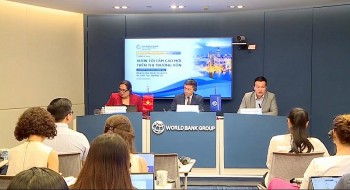 | WB: Vietnam's Economy Growth to Reach 6.1% in 2024 The World Bank (WB) forecasts that Vietnam's economy will grow 6.1% in 2024 and 6.5% in 2025 and 2026, higher than 5% in 2023. |


